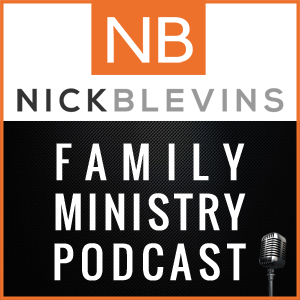Have you ever been confused by the terms mission, vision, strategy, and values?
Join the club.
In the first post in this series, I introduced this topic and wrote about Mission.
In the second post, I wrote about Vision and the role it plays.
In this post, we'll talk about church Strategy. While vision probably gets confused them most, I actually see church mission statements that look more like strategy statements. More on that later.
Strategy
Reggie Joiner has a great definition of strategy, saying:
“Strategy is a plan of action with an end in mind.” – Reggie Joiner
Reggie makes another statement about the importance of a strategy that I completely agree with:
“It’s the effectiveness of your strategy, not the scope of your mission, that ultimately determines your success.” – Reggie Joiner
What question does strategy answer?
Strategy answers the question – How will we get there?
Mission defines our purpose, as in why we exist. Vision describes where we are headed. Strategy describes how we'll get there. The book 7 Practices of Effective Ministry has helpful advice on the importance of thinking steps, not programs. Unlike the picture of thumbtacks above, a good strategy has a clear path with a clear next step. It's not just a random scattering of programs, events, classes, etc.
In the road trip analogy, strategy is the route plan
Our mission tells us why we're on the journey in the first place. Our vision points to a destination on the map. Strategy plots the route from where we are to where we want to be. For people in our churches, it's a defined path with clear next steps for how they can connect with Jesus and follow him.
What should a strategy statement look like?
Strategy statements can be a little longer than mission and vision. Those are basically a short sentence while a strategy can be defined with multiple phrases. Ideally, a good strategy could be drawn on a napkin to the point where someone new would understand it. They don't have to know every aspect, just the overarching plan.
The strategy at our church is the 3 C's – Celebrate, Connect, Contribute. We want to help people celebrate regularly with God in worship, connect in small groups, and contribute in ministry in the church and outside our walls. There are smaller steps along the way to help guide people, but that's the core strategy.
Why do mission and strategy sometimes get confused?
I see church mission statements that look more like strategy statements. For example, a common one would be:
Love God. Love People. Serve the World.
In the first post, I said that I think church mission statements should just be a re-wording of the Great Commission. Here you have the Great Commandment along with a call to serve. It's good, but for me personally I don't like that it doesn't reference making disciples in any way. It references growing them to love and serve more, but it's not clear the mission is about making new disciples.
It also looks like a strategy. A church could have a mission of “make disciples” and the strategy could be to lead people to Love God, Love People, and Serve the World. You could design a path at your church around those 3 things.
How does this relate to Family Ministry?
What is true for our church is true for any specific ministry. Without a clear strategy, we're just doing random things and hoping they have an impact. We're also not leveraging momentum or synergy by connecting things together. In our case, the strategy in family ministry is the same strategy we have for the entire church, but with one addition.
In addition to helping kids and students celebrate, connect and contribute, we also partner with parents. Parents are the biggest influence on their kid's lives and we want to help them use that influence well.
Action Step
Determine whether or not your church has a defined strategy for how you'll accomplish your mission. If it doesn't exist or isn't clear, start having conversations about how to create one. If one does exist, look closely at your family ministry and see if it translates.
Take the time to define your family ministry strategy and place everything you do where it fits in the strategy.
If something doesn't fit, get rid of it.
If multiple things serve the same purpose, pick the best one.
If there are gaps, create something helpful.
What we do is far too important to allow a muddy strategy to get in the way.






